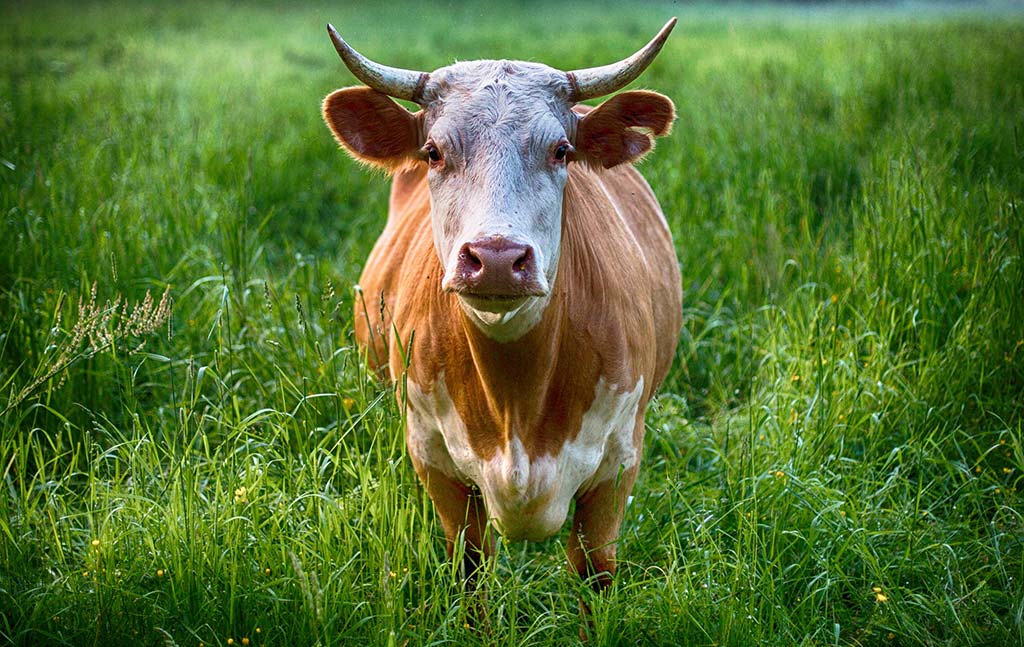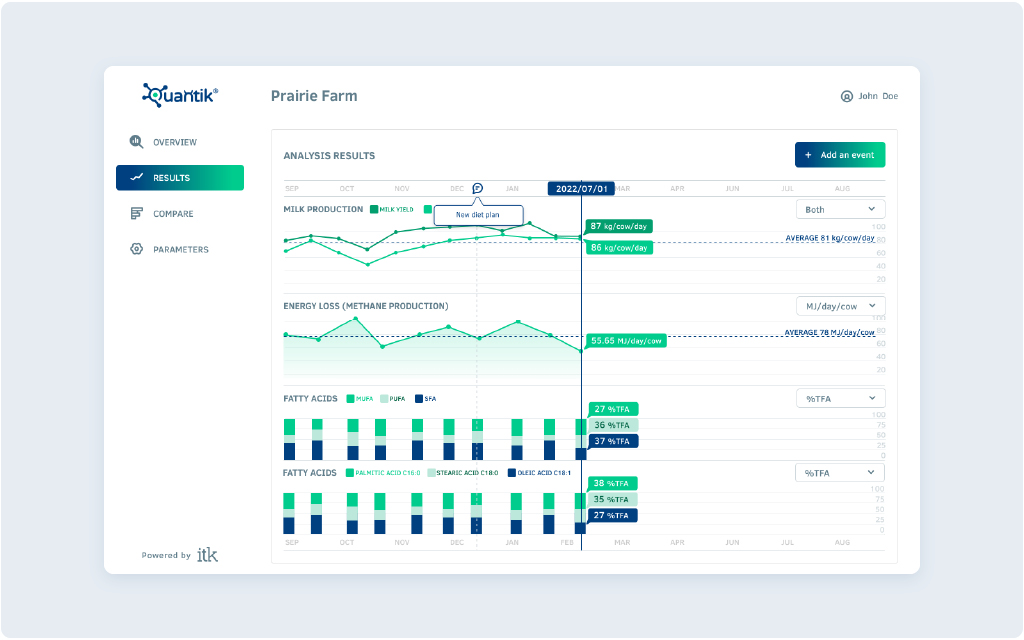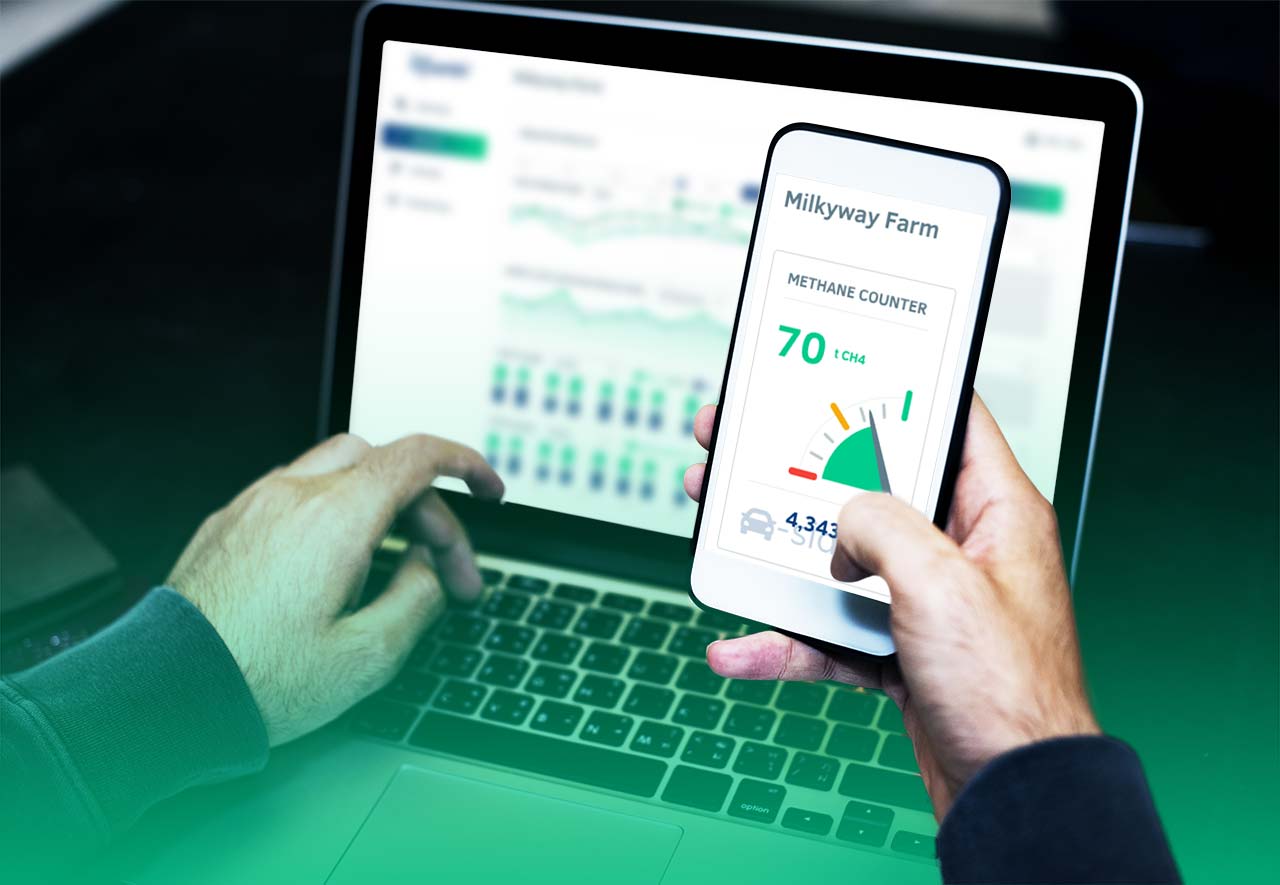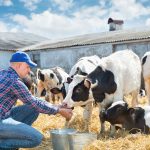Net zero strategy: With Quantik, learn to quantify and reduce dairy cow methane emission
Commercial farms: meet your Net Zero strategy commitments
Two years ago, the Innovation Center for U.S. launched the Dairy Net Zero Initiative that will help U.S. dairy farms to achieve carbon neutrality and improve water use by 2050.
By promoting data collection and experimentation in dairy farms this initiative improves data analysis and measurement, and advances practices and technologies that reduce environmental impact in four key areas of dairy production which together represent the total footprint of dairy farms: feed production, enteric methane reduction, energy efficiency, and manure management.
However, whereas feed additives manufacturers provide estimates of their effects in terms of methane reduction, their efficacity can vary according to several external factors. This makes it difficult to assess them and justify their use in the context of Net Zero.
The Quantik service provides a verified method that can be used on a large scale to quantify enteric methane emissions in a quick and cost-effective way.

The 3 advantages of a scientific recognized method to quantify cow methane emission
In order to monitor the effect of their methane reduction strategy and be sure to meet their Net Zero strategy commitments, dairy farmers, milk procurement officers and sustainability managers need to actively benchmark and measure methane emissions over time with a quantitative method.
Until now the only methods to quantify and monitor cow methane emissions were labor intensive and expensive. Respiration chambers and sniffer systems are unsuitable for monitoring over time and over a large scale, and they are costly and time consuming.
Indirect estimations based on models relating diet quality with emissions are equations that require very precise information as inputs, which limit their ability to make accurate predictions.
On the contrary, Quantik does not require any equipment installation nor detailed data on diet composition to evaluate methane emissions. It makes the most of an already existing procedure, routine milk sampling, using a new technology allowing to quantify enteric methane in a quick and cost-effective way.
Its advantages make it the perfect solution for carbon accounting and reporting in the context of Net Zero strategy projects :
- It is based on a solid science-based technology that has been tested for over 10 years.
With Quantik, milk fatty acids are profiled during milk analysis and related to enteric methane emissions through a scientific model. The link between milk fatty acids and enteric methane has been investigated since 2009 and the equations precisely quantifying this relationship have been patented in the US.
- It has been recognized internationally as a carbon accounting tool.
In Europe it is an approved method by the Low Carbon French Label, as a tool for carbon credit generation. It is equally recognized by the UNFCCC (United Nations Framework Convention on Climate Change) and it is compliant with the IPCC protocol for carbon accounting.
- It has a global validity.
As it is based on cow physiology and metabolism rather than environmental factors that can depend on farm location, it can be applied all over the world without losing its accuracy.
Make the most of your milk sampling routine: Quantik is easy and not time-consuming
Quantik takes advantage of milk analysis that are done routinely in dairy farms. Fatty acids levels are easily obtained and used to calculate enteric methane emissions through a verified and patented model. Methane emissions dynamics are automatically displayed in easy-to-read graphs that allow to benchmark their levels, and to assess and eventually improve the Net Zero strategy measures adopted by farms. According to projects requirements, milk samples can be taken from individual cows or from collective milk tanks, to estimate individual or average emissions. For all these reasons, Quantik is easy to implement, demand minimal time, and can be easily scaled to all farms of a supply shed.

4 steps to get the best quality daya out of Quantik Dairy Sustainability platform
Start measuring now, to reduce cattle emissions.
Mesure.
- Determine a baseline
- Quantify the cow enteric methane emissions for each of your dairy commercial farms with a simple milk analysis to establish a baseline.
Plan.
- Define a mitigation plan
- Benchmarking with similar farms will help you establish the best carbon curbing strategies.
- Choose the most efficient cow diet & feed additive actions according to their impact and feasability.
Reduce.
- Monitor reductions progress
- Reduction levers simulation
- Observe in time the benefits of your mitigation measures
- Access to a accredited laboratories network
Report impact.
- Data collection and integration
- Avail of objective, scientific-based indicators to quantify your GHG reduction in your ESG reporting.

